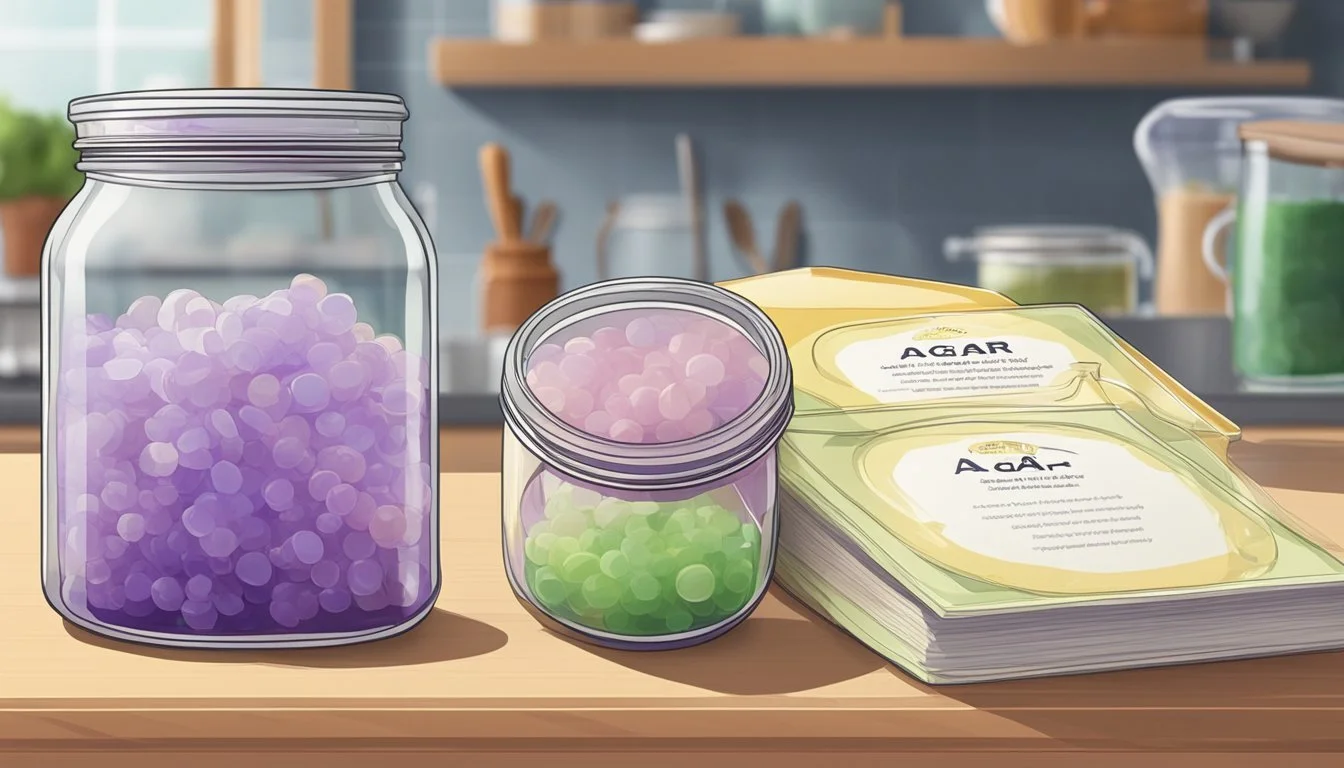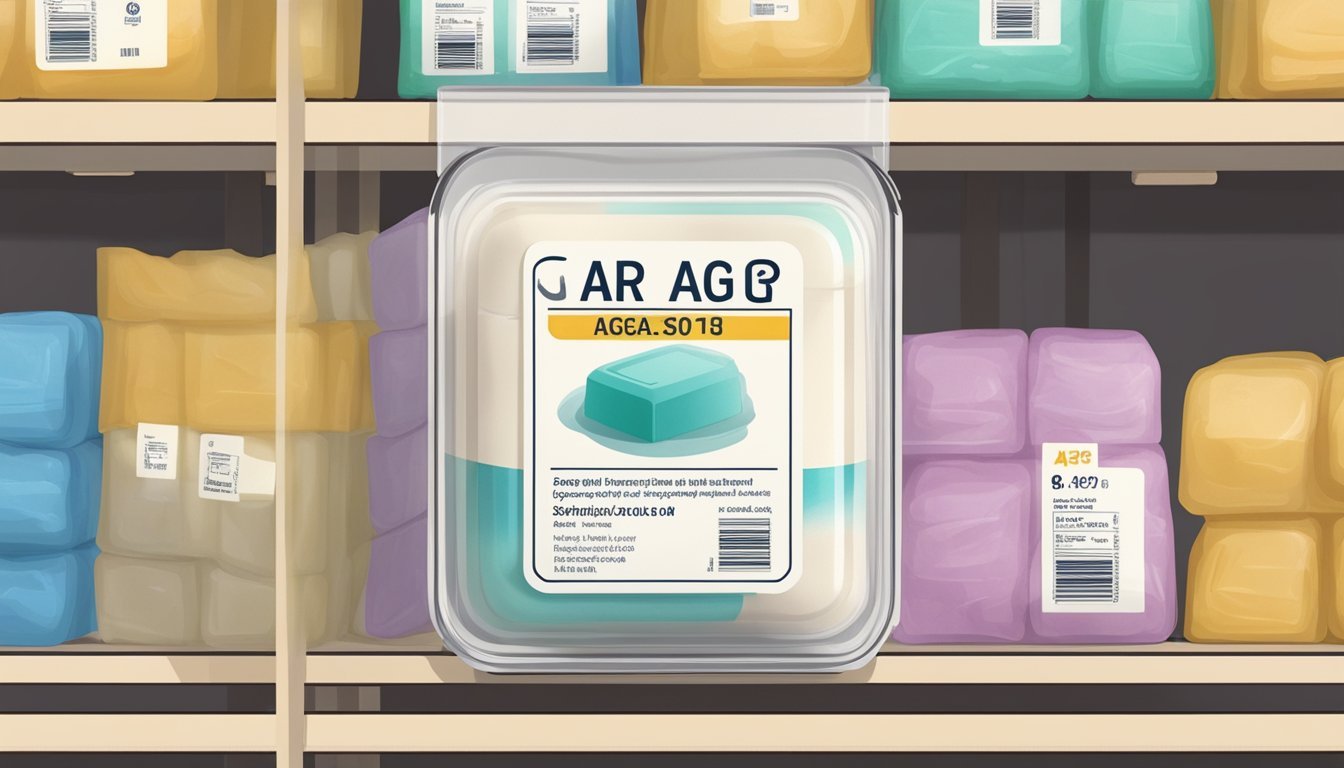Does Agar Agar Go Bad?
Shelf Life and Storage Tips
Agar agar, derived from red seaweed, has gained popularity as a reliable gelling agent in vegetarian and vegan dishes. It's celebrated for its versatility in creating firm textures in desserts, jellies, and various culinary applications. But a common question arises in many kitchens: does agar agar go bad?
If stored properly in a dry, cool place away from sunlight, agar agar can last up to five years without losing much of its effectiveness. That said, improper storage conditions such as exposure to moisture or high temperatures can degrade its gelling strength. This means that while it might not be unsafe to use past its expiration date, the quality could diminish over time.
For those who rely on agar agar's unique properties, it’s essential to adhere to best storage practices. Keeping it in an airtight container ensures it remains potent as a thickening agent. This simple measure can significantly prolong its shelf life, ensuring that it continues to serve its purpose in creating delightful vegan and vegetarian culinary delights.
Understanding Agar-Agar
Agar-agar, derived from red algae, is both historically significant and widely used in modern culinary practices. It serves as a popular vegan substitute for gelatin, offering unique properties that make it distinct.
Historical and Cultural Significance
Agar-agar, also known as kanten or China grass, has roots in East Asian cultures. Originating from Japan in the 17th century, it was initially used for its gelling properties in traditional desserts and dishes. The practice of extracting agar from seaweed expanded to other parts of Asia, including China and Korea, where it remains a staple in various culinary traditions.
Over time, its use spread globally, becoming valued not only for its thickening and gelling abilities but also for its nutritional benefits. Rich in fiber, agar-agar contributes to digestive health, making it a favored ingredient in both historical and contemporary diets.
Agar as a Culinary Ingredient
In the culinary world, agar-agar is renowned for its ability to form gels at room temperature, unlike gelatin, which requires refrigeration. This gelling agent is ideal for creating firm textures in desserts, jellies, and even savory dishes. It’s popular in making vegan and vegetarian substitutes for gelatin-based recipes due to its plant-based origin.
Agar-agar can be found in various forms, including powder, flakes, and bars. It’s crucial to dissolve it in room temperature liquid before heating it to a rolling boil to activate its gelling properties. Once set, agar-agar retains its shape and texture without melting, even in warmer temperatures, making it a versatile ingredient for cooks and chefs.
Agar vs. Gelatin
Agar-agar and gelatin are often compared due to their similar uses in gelling and thickening. However, they have distinct differences. Agar-agar is a vegan substitute made from red algae, while gelatin is derived from animal collagen, making agar suitable for vegetarians and those avoiding animal products.
Another key difference lies in their gelling properties. Agar-agar sets more firmly at room temperature and does not melt as easily as gelatin. This makes agar preferable in dishes that require stable gelling at higher temperatures. Furthermore, agar-agar contributes to nutritional benefits like fiber and minerals, unlike gelatin.
Properties of Agar
Agar, derived from red algae, has unique physical characteristics, culinary behavior, and a nutritional profile that make it a versatile ingredient in various culinary and scientific applications.
Physical Characteristics
Agar is a hydrophilic colloid made from the cell wall components of red algae species like Gelidium and Gracilaria.
When dried, it takes the form of a brittle, translucent strip or powder. Agar's gelling strength sets it apart from other substances. It gels at relatively low temperatures (32-39°C) and melts at higher temperatures (90-95°C). This unique property allows it to remain solid at room temperature while being able to melt and reset without altering its structure. It is also responsible for creating firm, stable gels that are essential in many food and lab settings.
Culinary Behavior
In culinary applications, agar acts as a prominent thickening and stabilizing agent.
To use it, disperse agar powder in room temperature liquid and then bring it to a rolling boil to activate its gelling properties. As it cools, agar sets into a firm gel, which retains its shape even when cut or molded. Unlike gelatin, agar doesn't dissolve in the mouth, providing a unique gelatinous texture. It is flavorless and odorless, making it ideal for a wide range of recipes, including desserts, jellies, and custards, without altering the taste.
Nutritional Profile
Agar is not only a versatile additive but also a source of various nutrients.
It is free from common allergens like soy, gluten, and dairy. Rich in fiber, agar promotes digestive health by aiding in regular bowel movements. It provides essential minerals such as calcium and iron, contributing to bone health and preventing anemia. Agar's low-calorie content makes it a popular choice among those looking to lose weight, as it can create a sensation of fullness without adding extra calories. Additionally, agar contains no preservatives, making it a clean, healthy ingredient in various dietary plans.
Application in Recipes
Agar agar is widely used in culinary applications due to its versatility and effectiveness as a gelling agent. It can create firm textures in desserts, act as a thickener, and serve as a key ingredient in vegan and vegetarian dishes.
Preparation Techniques
Agar agar is available in powder and flake forms. Powdered agar is more potent and easier to dissolve. It should be mixed with room temperature liquid and then brought to a rolling boil to ensure proper dissolution. Agar flakes are less concentrated and require longer boiling to dissolve completely. For best results, always dissolve agar agar in water or another liquid before adding it to any other ingredients to avoid clumping.
Common Uses in Desserts
Agar agar is popular in various desserts, including puddings, jellies, and panna cotta. It sets at room temperature and maintains stability at higher temperatures. In raindrop cakes, it creates the signature delicate texture. Agar can be mixed with different liquids such as soy or coconut milk to add unique flavors. Since it is flavorless, it won't alter the taste of the final product.
Vegan and Vegetarian Applications
Agar agar is an excellent alternative to gelatin, making it ideal for vegan and vegetarian recipes. It can be used to create plant-based versions of traditional gelatin desserts. In addition, it functions as a thickener in soups and sauces. Its gelling properties are particularly useful in dishes that require a firm set without animal products, making it a versatile tool in vegan cuisine.
Storage and Shelf Life
Agar agar, a versatile gelling agent, boasts a long shelf life when stored properly. Typically, its shelf life can extend up to five years if kept in optimal conditions.
Storage Guidelines:
Pantry: Store agar agar in a cool, dry place such as a pantry.
Air-tight Containers: Use air-tight containers to limit exposure to moisture and air.
Temperature: Avoid elevated temperatures and direct sunlight.
Avoid Moisture: Exposure to moisture can degrade the quality and gelling strength. Therefore, maintaining a dry environment is crucial.
Expiration Dates: Always check the expiration or “best before” dates provided by the manufacturer. Though agar agar rarely becomes unsafe, these dates help in assessing its potency and effectiveness.
Old Agar: Over time, old agar agar may lose some of its gelling properties. Testing its gelling strength before use can ensure the quality remains intact. To test, dissolve 1/2 tbsp of agar flakes in 175 ml of water and bring it to a boil.
Refrigeration: Refrigeration is generally unnecessary for dry agar agar but can be considered for prepared gels to maintain freshness.
Following these storage practices will help in retaining the freshness and efficacy of agar agar over extended periods.
Signs of Aging and Spoilage
Agar agar can show signs of aging and spoilage, which can compromise its effectiveness and safety. Notable indicators include changes in odor, color, texture, and the presence of mold.
How to Detect Spoiled Agar
Visual Changes: Discoloration is a primary indicator of spoiled agar. Fresh agar typically has a clean and translucent appearance. If the agar turns cloudy, yellow, or develops dark spots, it might be spoiled.
Odor: A fresh batch of agar should have little to no smell. A sour or musty odor is a strong indicator that it has gone bad.
Texture and Consistency: Agar should be firm and consistent. Any increase in hardness or brittleness, or the presence of slimy textures, could indicate spoilage.
Mold Presence: The appearance of mold, which can range from white to green or black, is a clear sign that the agar is no longer safe to use.
Safety Considerations
Using spoiled agar can have various safety concerns. Bacteria and mold that grow on expired agar can lead to contamination in food or experimental setups. This not only poses health risks but also compromises the integrity of different applications, such as cooking or scientific research.
Storage: To maximize the shelf life, store agar in a tightly sealed container, away from moisture, direct sunlight, and strong odors.
Best Before Date: While agar can last up to five years, it's crucial to check and adhere to expiration dates. Misjudging its usability may lead to ineffective gelling properties and potential health hazards.
Usage: Always inspect agar for any signs of spoilage before use to ensure it maintains its quality and safety. If in doubt, it's safer to discard the product and replace it.
Shopping for Agar
When shopping for agar-agar, it is important to consider the different forms available and specific points to consider to ensure quality and usability.
Different Forms of Agar
Agar-agar is available in several forms including powder, flakes, strands, and bars. Each has its own unique characteristics and is used differently in recipes.
Powdered agar is the most commonly used form and dissolves quickly when mixed with liquid.
Flakes and strands require more time and sometimes a stronger boil to dissolve completely.
Bars are less common and typically need to be broken down into smaller pieces before use.
Points to Consider When Buying
When purchasing agar-agar, it's important to consider where you are buying it and the brand's reputation. Supermarkets, health food stores, specialty food stores, and Asian markets are all good places to look for high-quality agar.
Online platforms such as Amazon also offer a wide variety of options and customer reviews to help make an informed choice. Always check the expiration date, as agar can lose its gelling strength over time.
Additionally, be sure to read labels for any added preservatives or fillers which may not be ideal for all recipes. Look for 100% plant-based agar for the best results.
Health and Nutritional Benefits
Agar agar offers numerous health benefits, particularly due to its high fiber content, lack of calories, and essential minerals. It can aid in digestion, promote satiety, and contribute to overall nutritional intake.
Agar as Part of a Balanced Diet
Agar agar, derived from red algae, is renowned for its high fiber content. Fiber plays a crucial role in digestion, acting as a natural laxative to facilitate bowel movements. This helps to cleanse the digestive system and prevent constipation.
The substance is virtually calorie-free and contains no fat or carbs, making it an excellent addition to weight loss diets. When consumed, agar forms a gel-like substance in the stomach, promoting a feeling of fullness. This can help reduce overall calorie consumption.
Beyond fiber, agar is packed with essential minerals like calcium, iron, and magnesium. These minerals contribute to maintaining healthy bones and support various bodily functions.
Potential Health Advantages
Agar agar's high fiber content provides numerous health benefits. It not only enhances digestion but also helps in detoxification by drawing out toxins from the body. The fiber in agar aids in regular bowel movements, contributing to overall digestive health.
The gelatinous substance formed by agar in the stomach can curb overeating by promoting satiety. This makes it a valuable tool for weight management, as it reduces the tendency to consume excess calories.
Additionally, the minerals in agar like calcium boost bone density, and iron supports healthy blood cells. By incorporating agar into the diet, individuals can benefit from enhanced digestive health and improved mineral intake without worrying about additional calories.
Agar in Non-Culinary Uses
Agar finds versatile applications beyond the kitchen, particularly in scientific research and various industrial processes. Its plant-based origin and gelatin-like properties make it valuable in these fields.
Agar in Scientific Research
Agar is a staple in laboratories, frequently used as a growth medium for microbiological cultures. Its gel-like consistency provides a stable surface for bacterial and fungal colonies to grow.
The medium's clarity allows easy observation of microbial growth. Agar helps in studying bacterial motility, antibiotic resistance, and genetic research.
In addition, agar gels are used in electrophoresis experiments to separate DNA, RNA, or proteins based on size and charge. Its non-nutrient properties ensure it doesn't interfere with the experiment parameters, maintaining result accuracy.
Industrial Applications
In industry, agar serves multiple functions. It acts as a clarifying agent in brewing, helping to enhance the clarity of beverages by removing suspended particles. This is crucial for improving product quality and consumer appeal.
Agar is also used in cosmetics and pharmaceuticals as a thickener and stabilizer due to its plant-based nature, which appeals to consumers seeking natural ingredients.
In paper and textile manufacturing, agar helps enhance the texture and finish of products. By providing a smooth coating, it improves the quality and durability of the final product lines. This makes it a valuable component across diverse industrial applications.









